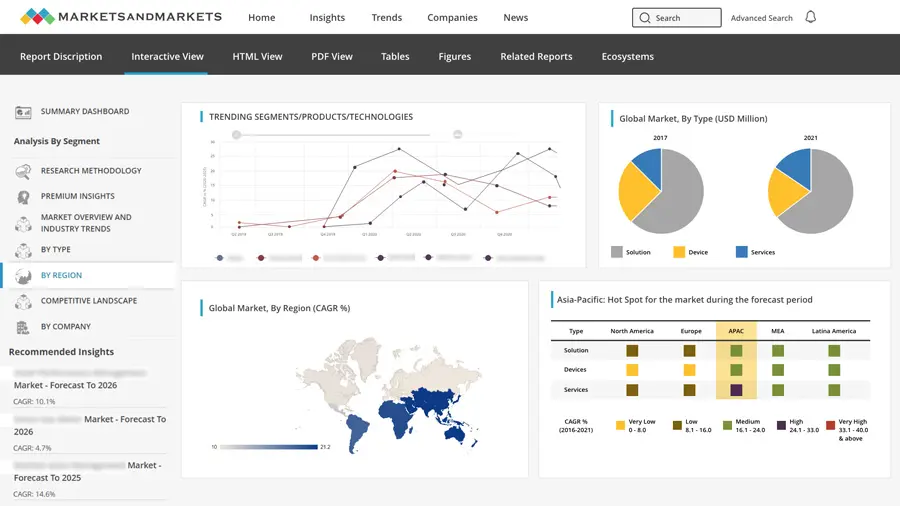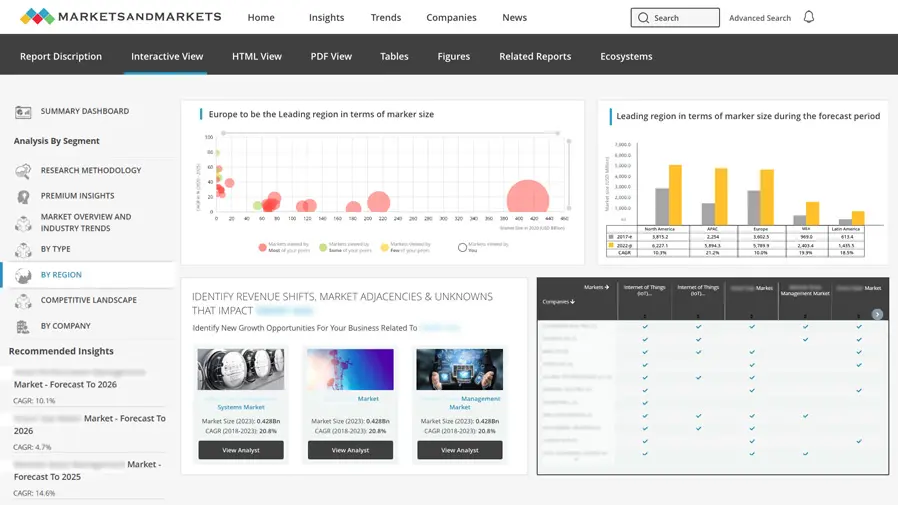Dust Sensors Market By Type (Optical Dust Sensors, Infrared Dust Sensors, Laser Dust Sensors, Light Scattering Dust Sensors), Technology (Light Scattering, Light Absorption, Gravimetric Detection, Electrostatic Precipitation,Piezoelectric Detection), End Use Industry( Industrial, Environmental Monitoring, Healthcare, Consumer Electronics, Automotive, Aerospace & Defense) Region(North America, Europe, Asia Pacific) – Global Forecast To 2030
Dust sensors are specialized devices designed to detect and measure airborne particulate matter, playing a crucial role in monitoring air quality across various industries. With rising concerns over pollution and occupational hazards, dust sensor technology has evolved to offer higher precision and real-time monitoring capabilities. These sensors are used in industrial environments, residential areas, automobiles, and healthcare applications to ensure compliance with air quality standards and safeguard human health. The adoption of dust sensors is driven by growing environmental regulations, increasing industrial automation, and rising public awareness regarding air pollution. Advanced dust sensors integrate multiple technologies such as light scattering, gravimetric detection, and electrostatic precipitation to deliver accurate measurements in varying environmental conditions.
The dust sensors market is segmented by type into optical dust sensors, infrared dust sensors, laser dust sensors, light scattering dust sensors, and others. Optical dust sensors use light refraction techniques to measure particle concentration, commonly found in consumer electronics and air purifiers. Infrared dust sensors rely on infrared beams to detect particulate matter, often utilized in industrial applications for monitoring factory emissions. Laser dust sensors provide high-precision readings by using laser beams to identify fine particles, making them ideal for research and environmental monitoring. Light scattering dust sensors measure dust concentration by analyzing light dispersion caused by airborne particles, widely employed in HVAC systems and healthcare applications. Other types include hybrid sensors that integrate multiple detection methods to enhance accuracy and reliability.
By technology, the dust sensors market is classified into light scattering, light absorption, gravimetric detection, electrostatic precipitation, piezoelectric detection, and others. Light scattering technology is widely used due to its ability to provide real-time monitoring with high sensitivity. Light absorption sensors detect particulate matter by measuring the reduction in light intensity passing through air samples. Gravimetric detection, a traditional and highly accurate method, involves collecting particles on filters and weighing them to determine concentration levels. Electrostatic precipitation technology uses electric charges to capture and remove dust particles from the air, commonly applied in industrial filtration systems. Piezoelectric detection converts pressure changes caused by particulate accumulation into electrical signals, offering a reliable solution for sensitive applications such as healthcare and precision manufacturing. Other technologies include hybrid detection systems that combine different principles for enhanced measurement capabilities.
The market is further segmented by end-use industry, including industrial, environmental monitoring, healthcare, consumer electronics, automotive, aerospace & defense, agriculture, and other industries. Industrial applications of dust sensors include monitoring emissions in manufacturing plants, mining operations, and construction sites to ensure compliance with regulatory standards. Environmental monitoring relies on these sensors for measuring air quality in urban areas, research stations, and pollution control initiatives. In healthcare, dust sensors are used in hospitals, laboratories, and clean rooms to maintain sterile environments and prevent airborne contamination. Consumer electronics integrate dust sensors in air purifiers, smart home devices, and wearable air quality monitors. The automotive industry employs dust sensors in vehicle cabin filtration systems and emissions monitoring. Aerospace & defense applications include aircraft air filtration, military-grade environmental monitoring, and space exploration systems. In agriculture, dust sensors help monitor air quality in storage facilities, greenhouses, and livestock farms to ensure optimal conditions for crops and animals. Other industries include telecommunications and smart city infrastructure, where dust sensors are used for monitoring air pollution and optimizing HVAC performance.
The global dust sensors market is segmented geographically into North America, South America, Europe, Asia Pacific, and the Middle East & Africa. Asia Pacific is expected to witness significant growth due to rapid industrialization, increasing urban pollution, and government initiatives to improve air quality monitoring systems. Countries such as China, India, Japan, and South Korea are major contributors to market expansion due to stringent environmental policies and rising demand for consumer air quality monitoring devices. In North America, the demand for dust sensors is fueled by the growing adoption of smart home technologies and increasing regulations on industrial emissions. Europe is also experiencing strong growth, driven by strict air quality standards and advancements in sensor technology. The Middle East & Africa region is witnessing an increasing deployment of dust sensors for monitoring desert dust storms and improving air quality in urban centers. South America’s market growth is primarily driven by industrial expansion and environmental sustainability initiatives in countries like Brazil and Argentina.
Key players in the dust sensors market include Cubic Sensor and Instrument Co., Ltd (China), ENVEA (France), Zhengzhou Winsen Electronics Technology Co., Ltd (China), SERRAX TECHNOLOGIES LLP (India), BARTEC Group GmbH (Germany), CM Envirosystems (India), AMS HADEN (South Africa), Polex Environmental Engineering Pty Ltd (Australia), Temtop (China), and Seeed Studio (China). These companies focus on technological advancements, product innovation, and strategic partnerships to strengthen their market position and cater to the growing demand for air quality monitoring solutions.

Table of Contents
-
Introduction
- Study Objectives
-
Market Definition and Scope
- Inclusions and Exclusions
-
Study Scope
- Markets Covered
- Geographic Segmentation
- Years Considered for the study
- Currency
- Limitations
- Stakeholders
- Summary of Changes
-
Research Methodology
-
Research Data
-
Secondary Data
- Major Secondary Sources
- Key Data from Secondary Sources
-
Primary Data
- Primary Interviews with Experts
- Key Data from Primary Sources
- Key Industry Insights
- Breakdown of Primaries
-
Market Size Estimation
-
Bottom-Up Approach
- Approach for Capturing Market Share by Bottom-Up Analysis (Demand Side)
-
Top-Down Approach
- Approach for Capturing Market Share by Top-Down Analysis (Supply Side)
- Market Breakdown and Data Triangulation
- Research Assumptions
- Risk Assessment
- Limitations of Research
-
Bottom-Up Approach
-
Secondary Data
-
Research Data
- Executive Summary
- Premium Insights
-
Market Overview
- Introduction
- Market Dynamics
- Trends/Disruptions Impacting Customer’s Business
-
Pricing Analysis
- Average Selling Price Trend of Key Players, By Type
- Average Selling Price Trend, By Region
- Value Chain Analysis
- Ecosystem Analysis
-
Technology Analysis
-
Key Technologies
- Optical Particle Counting (OPC)
-
Complementary Technologies
- Air Purification Systems
-
Adjacent Technologies
- Gas Sensors
- Patent Analysis
-
Trade Analysis
- Import Scenario
- Export Scenario
- Key Conferences and Events (2025-2026)
- Case Study Analysis
- Investment and Funding Scenario
-
Tariff and Regulatory Landscape
- Regulatory Bodies, Government Agencies, and Other Organizations
- Key Regulations
-
Porters Five Force Analysis
- Threat from New Entrants
- Threat of Substitutes
- Bargaining Power of Suppliers
- Bargaining Power of Buyers
- Intensity of Competitive Rivalry
-
Key Stakeholders and Buying Criteria
- Key Stakeholders in Buying Process
- Buying Criteria
-
Key Technologies
-
Dust Sensors Market, By Type
- Optical Dust Sensors
- Infrared Dust Sensors
- Laser Dust Sensors
- Light Scattering Dust Sensors
- Other Types
-
Dust Sensors Market, By Technology
- Introduction
- Light Scattering
- Light Absorption
- Gravimetric Detection
- Electrostatic Precipitation
- Piezoelectric Detection
- Other Technologies
-
Dust Sensors Market, By End Use Industry
- Introduction
- Industrial
- Environmental Monitoring
- Healthcare
- Consumer Electronics
- Automotive
- Aerospace & Defense
- Agriculture
- Other End Use Industries
-
Dust Sensors Market, By Region
- Introduction
-
North America
- Macro-Economic Outlook
- US
- Canada
- Mexico
-
Europe
- Macro-Economic Outlook
- Germany
- UK
- France
- Spain
- Italy
- Poland
- Nordics
- Rest of Europe
-
Asia Pacific
- Macro-Economic Outlook
- China
- Japan
- South Korea
- India
- Australia
- Indonesia
- Malaysia
- Thailand
- Vietnam
- Rest of Asia Pacific
-
RoW
- Macro-Economic Outlook
-
Middle East
- Bahrain
- Kuwait
- Oman
- Qatar
- Saudi Arabia
- United Arab Emirates (UAE)
- Rest of Middle East
-
Africa
- South Africa
- Other African Countries
- South America
-
Dust Sensors Market, Competitive Landscape
- Introduction
- Key player strategies/right to win
- Revenue Analysis
- Market Share Analysis
- Company Valuation and Financial Metrics
- Brand/Product Comparison
-
Company Evaluation Matrix: Key Players, 2024
- Stars
- Emerging Leaders
- Pervasive Players
- Participants
-
Company Footprint: Key Players, 2024
- Type Footprint
- Region Footprint
- Technology Footprint
- End use industry Footprint
-
Company Evaluation Matrix: Startups/SMEs, 2024
- Progressive Companies
- Responsive Companies
- Dynamic Companies
- Starting Blocks
-
Competitive Benchmarking: Startups/SMEs, 2024
- Detailed List of Key Startups/SMEs
- Competitive Benchmarking of Key Startups/SMEs
-
Competitive Situation and Trends
- Product launches
- Partnerships, Collaborations, Expansions, Alliances and Joint ventures
-
Dust Sensors Market, Company Profiles
-
Key Players
- Cubic Sensor and Instrument Co., Ltd (China)
- ENVEA (France)
- Zhengzhou Winsen Electronics Technology Co., Ltd (China)
- SERRAX TECHNOLOGIES LLP (India)
- BARTEC Group GmbH (Germany)
- CM Envirosystems (India)
- AMS HADEN (South Africa)
- Polex Environmental Engineering Pty Ltd (Australia)
- Temtop (China)
- Seeed Studio (China)
- Other Players
-
Key Players
-
Appendix
- Discussion Guide
- Knowledge Store: MarketsandMarkets’ Subscription Portal
- Available Customizations
- Related Reports
- Author Details
Note 1: The above list of companies is tentative and might change during the due course of research.
Note 2: The current table of contents is tentative and is subject to change as we progress with our research.















Growth opportunities and latent adjacency in Dust Sensors Market